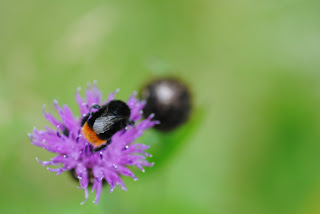Musings from a wildflower nursery owner on all things wildflower and British wildlife related.
Wednesday, 6 February 2013
WILDFLOWERS FOR BEES
February is a good time to plan what you want to do in your garden this year. Perfect winter evening past time is sitting by the fire browsing seed and plant catalogues and thinking wistfully of the summer days to come! Whilst doing all this marvellous planning, though, nature would really appreciate it if you bore in mind the impact your plantings and design will have on wildlife. This blog will provide you with a really useful list of UK wildflowers that will attract and help our native UK bees.
Our bees are declining in number so anything we can do to help their survival will help.
Bugle, Daisy, Harebell, Horseshoe Vetch, Birds Foot Trefoil, Cowslip, Selfheal,Creeping Buttercup, Salad Burnet, Dandelion, Wild Thyme, Red Clover, White Clover, Germander Speedwell, Ramsons, Columbine, Garlic Mustard, Black Horehound, White Bryony, Nettle-leaved Bellflower, Wild Clematis, Wild Basil, Wild Foxglove, Hedge Bedstraw, Sweet Woodruff, Lady's Bedstraw, Herb Robert, Wood Avens, Ivy, Bluebell, White Deadnettle, Yellow Archangel, Honeysuckle, Mallow, Wood Forget-me-not, Wild Primrose, Lesser Celandine, Sanicle, Red Campion, White Campion, Betony
(Bee on Cornflower)
Greater Stitchwort, Comfrey, Wood Sage, Common Vetch, Tufted Vetch, Corncockle, Corn Chamomile, Cornflower, Chicory (below), Teasel (Below):
Viper's Bugloss, Corn Marigold, Scented Mayweed, Field Forget-me-not, Poppy:
Coltsfoot, Great Mullein, Rosebay Willowherb, Pignut, Hound's Tongue:Wild Carrot, Meadow Cranesbill, Field Scabious, Meadow Vetchling, Wild Parsnip, Devil's Bit Scabious, Tansy, Meadow Rue, Goat's Beard, Dark Mullein, Yarrow, Toadflax, Ox-eye Daisy, Greater Knapweed, Lesser Knapweed:
Musk Mallow, Restharrow, Wild Mignonette, Yellow Rattle:
Small Scabious, Bladder Campion, Agrimony, Kidney Vetch, Thrift, Clustered Bellflower, Hawkbit, Lady's Smock, Marsh Marigold, Yellow Loosestrife, Purple Loosestrife, Dropwort, Jacob's Ladder, Fleabane, Sea Kale, Rock Samphire, Yellow-horned Poppy, Biting Stonecrop, Yellow Iris.
Some Other Plants (not wild)
Ceonathus:
Flowering currant, Azalkea, Berberis, Broom, Phacelia, Weigela, open-faced Roses, flowering Hebes, Heathers, Escallonia, Skimmia, Potentilla, Cotoneaster, Pieris, Hellebore,Hibiscus, Delphinium, Sweet William, Globe Thistle, Red Valerian, Larkspur, Sunflower, Hyssop, Poached Egg Plant, Lavender, Bergamot, Mint, Sage, Rosemary, Buddleia
Hedging
Blackthorn, Dogwood, Willows, Sweet Briar, Blackberry, Rowan, Wild Privet, Field Maple, Wayfaring Tree, Guelder Rose.
This isn't an exhaustive list and there are plenty of other non-wild plants that bees love. The Royal Horticultural Society have a very long and useful list you can download.
Buy bee plants and other wildflowers from the English Cottage Garden Nursery Ltd
Wild About Wildflowers
Plants for Bumblebees
Subscribe to:
Post Comments (Atom)













No comments:
Post a Comment